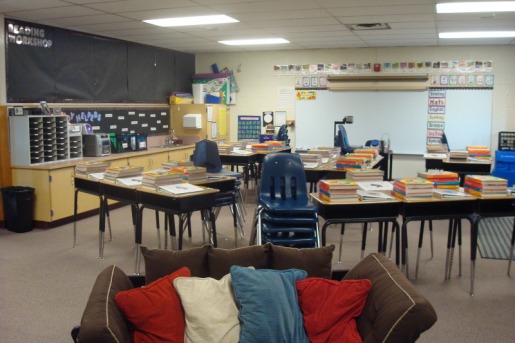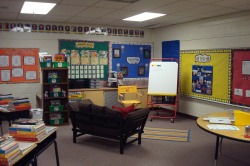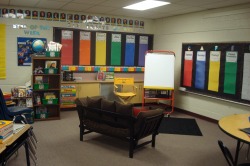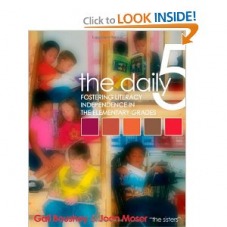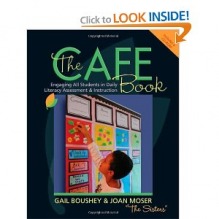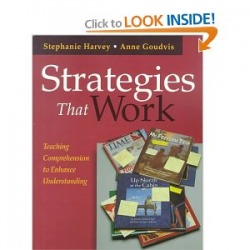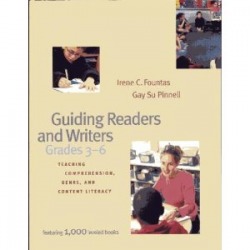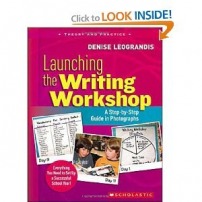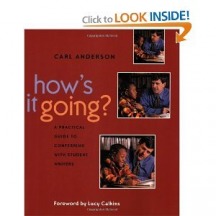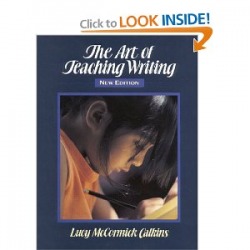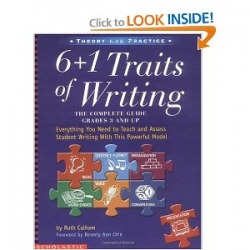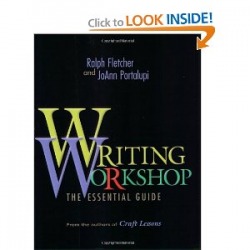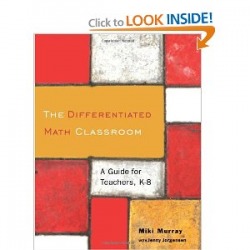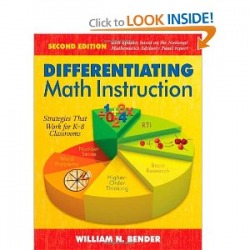Differentiation Made Easy:
Teaching with a Workshop Approach
Teaching with a Workshop Approach
F.A.Q. - Frequently Asked Questions
What do you do for spelling instruction?
I believe in differentiation for everything, including spelling. What I have done the past couple of years is I give a pretest to the whole class on Monday for the spelling word pattern. If a student gets 100% on the Monday pretest, they become an alternate speller. If they get one or more wrong, they are a regular contract speller for the week. We take a post test on Friday.
Regular Spellers:
Students not passing the pretest have a contract full of choices of what they can do to practice their spelling skills. The objective is to do choices that total up to 100 points, because however many points they do is the percentage they will get on their spelling contract. The words for the week are taken from the Houghton Mifflin spelling series for 5th graders.
Alternate Spellers:
Students who get 100% on the pretest become alternate spellers. These students pick 12 challenging words to be the words they will be tested on and will work on until Friday. Students need to write each word in a sentence and have two choice activities for the week to complete.
Regular Spellers:
Students not passing the pretest have a contract full of choices of what they can do to practice their spelling skills. The objective is to do choices that total up to 100 points, because however many points they do is the percentage they will get on their spelling contract. The words for the week are taken from the Houghton Mifflin spelling series for 5th graders.
Alternate Spellers:
Students who get 100% on the pretest become alternate spellers. These students pick 12 challenging words to be the words they will be tested on and will work on until Friday. Students need to write each word in a sentence and have two choice activities for the week to complete.
| unit_1.doc |
Here is an example of a spelling contract for a regular speller.
Your classroom pictures show the walls with blank spaces, what is the reason?
My philosophy is that the classroom to start off the school year should be set up and have a flow for students to use supplies. However, I do not put up a lot of "purchased" or own a lot of teacher store decorations for my classroom. I believe that what should be put up on the walls are students learning, that way students will actually use what we put up in the classroom. I have found that students do not really "see" what you put up before the first day of school, but they do see what you have worked and created together.
Also, I use one color for the background of every board (this year I used black) and the same border for all my boards (I used multicolored stars) in the classroom. This way, what is displayed on the board stands out and becomes the focus. I used to have every board be a different color and every board a different border, but it made what was but on the bulletin boards secondary, and really that is what is most important. Using a consistent color scheme keeps the room coordinated, as well.
Also, I use one color for the background of every board (this year I used black) and the same border for all my boards (I used multicolored stars) in the classroom. This way, what is displayed on the board stands out and becomes the focus. I used to have every board be a different color and every board a different border, but it made what was but on the bulletin boards secondary, and really that is what is most important. Using a consistent color scheme keeps the room coordinated, as well.
My Classroom Before:
My Classroom After:
What is the structure of a workshop classroom?
The structure I follow is:
1. WHOLE-GROUP MINILESSON
You want to keep it no longer in minutes to the age of the students you teach. This is a lot harder for teachers than it sounds, we sure do like to talk, but unfortunately, you need to get to the heart of the lesson right away. For writer's workshop, you would teach a writing strategy. I usually teach about one of the six traits of writing. For reader's workshop, I teach a reading strategy. For math, it would be a math strategy.
2. STUDENT PRACTICE TIME & CONFERENCING
What students do: After the minilesson, students can pick a literacy activity to engage in. I use the "2 Sisters" Daily 5 activities for reader's workshop: Read to Self, Read to Someone, Work on Writing, Listen to Reading and Work on Words. During Writer's Workshop, after the minilesson, students work on writing, wherever they are at in the writing process. Every once in a while, I give a topic to write about, such as if I need to assess something they are writing formally. However, this time should be devoted to kids working on writing of their choice. Before students make their choice, I let the students know if I will be working with them or not.
What the teacher does: While students are engaged in literacy/writing/math activites, I go around and conference with students one-on-one or if many students need help with the same strategy, I can pull a strategy group to work with.
3. CHECK IN AND REPEAT STEPS 1 & 2
After about 20-30 minutes or so, have the class meet together as a whole-group and teach another minilesson and check in with how the last "round" went and have students pick their next activity.
In upper elementary (grades 3-6 roughly) I do about 2 full rounds, in lower elementary, (K-2) you could do more rounds and have shorter amounts of time in between.
1. WHOLE-GROUP MINILESSON
You want to keep it no longer in minutes to the age of the students you teach. This is a lot harder for teachers than it sounds, we sure do like to talk, but unfortunately, you need to get to the heart of the lesson right away. For writer's workshop, you would teach a writing strategy. I usually teach about one of the six traits of writing. For reader's workshop, I teach a reading strategy. For math, it would be a math strategy.
2. STUDENT PRACTICE TIME & CONFERENCING
What students do: After the minilesson, students can pick a literacy activity to engage in. I use the "2 Sisters" Daily 5 activities for reader's workshop: Read to Self, Read to Someone, Work on Writing, Listen to Reading and Work on Words. During Writer's Workshop, after the minilesson, students work on writing, wherever they are at in the writing process. Every once in a while, I give a topic to write about, such as if I need to assess something they are writing formally. However, this time should be devoted to kids working on writing of their choice. Before students make their choice, I let the students know if I will be working with them or not.
What the teacher does: While students are engaged in literacy/writing/math activites, I go around and conference with students one-on-one or if many students need help with the same strategy, I can pull a strategy group to work with.
3. CHECK IN AND REPEAT STEPS 1 & 2
After about 20-30 minutes or so, have the class meet together as a whole-group and teach another minilesson and check in with how the last "round" went and have students pick their next activity.
In upper elementary (grades 3-6 roughly) I do about 2 full rounds, in lower elementary, (K-2) you could do more rounds and have shorter amounts of time in between.
How do you run an effective workshop classroom?
If you've ever had this question running through your mind, this webpage can help you get started with what you might need. I am a fifth grade teacher and over the past few years I've conducted action research in my classroom and read a lot of literature on the subject of reading and writing workshop. I will highlight on this website some resources that you might find helpful on your journey to creating a reading and writing workshop classroom. I would try running a workshop in one area - for instance I started with writing a few years ago, then I added reading on top of it and now math. Once you see the power in it, it will be easy to transfer your knowledge of how the workshop worked in the one area into other curricular areas. The most helpful books I found on the subject are listed below. Click on the picture of a book to be sent to the Amazon shop so you can buy one of these helpful and informative books!
Reading Workshop Books
The Daily 5 by Gail Boushey & Joan Moser
This book is detailing what all the students in your classroom are engaged in during reader's workshop when you are meeting with small groups and individually conferencing. The 5 activities students can pick from are: Read to Self, Read to Someone, Listen to Reading, Work on Writing and Work With Words.
This book is detailing what all the students in your classroom are engaged in during reader's workshop when you are meeting with small groups and individually conferencing. The 5 activities students can pick from are: Read to Self, Read to Someone, Listen to Reading, Work on Writing and Work With Words.
The CAFE Book by Gail Boushey & Joan Moser
This book is my resource for teaching my reader's workshop minilessons and for individually conferencing with students on their reading. This book is full of great instructional practices for teaching the reading strategies students need most. It also details how to use your assessments to inform your instruction and keeping track of it all!
This book is my resource for teaching my reader's workshop minilessons and for individually conferencing with students on their reading. This book is full of great instructional practices for teaching the reading strategies students need most. It also details how to use your assessments to inform your instruction and keeping track of it all!
Strategies That Work: Teaching Comprehension to Enhance Understanding by Stephanie Harvey
This book is another awesome resource, especially for upper elementary teachers because every student needs help with their reading comprehension strategies. This book is a helpful tool for minilessons and conferencing with student readers. This book walks you through, as the teacher, how to teach the important comprehension strategies that can often be hard to explain.
This book is another awesome resource, especially for upper elementary teachers because every student needs help with their reading comprehension strategies. This book is a helpful tool for minilessons and conferencing with student readers. This book walks you through, as the teacher, how to teach the important comprehension strategies that can often be hard to explain.
Guiding Readers and Writers Grades 3-6: Teaching Comprehension, Genre & Content Literacy by Fountas and Pinnell
This book has a lot of practical knowledge for running a workshop classroom. There is a peek inside one teacher's classroom, included with pictures of how they structure and organize their room for a workshop environment. Exceptional teacher, Beth Newingham has gotten a lot of her management ideas from this book.
This book has a lot of practical knowledge for running a workshop classroom. There is a peek inside one teacher's classroom, included with pictures of how they structure and organize their room for a workshop environment. Exceptional teacher, Beth Newingham has gotten a lot of her management ideas from this book.
Writing Workshop Books
Launching the Writing Workshop: A Step-by-Step Guide in Photographs by Denise Leograndis
I really believe that a powerful part of a workshop classroom is creating "anchor" charts during our minilessons and posting those charts in the classroom for student use. This book has a ton of pictures and set up ideas of anchor charts that are helpful for launching the writer's workshop in the beginning of the school year. I do not run my workshop the same way Leograndis does, but those who are first starting out could follow her guidelines.
I really believe that a powerful part of a workshop classroom is creating "anchor" charts during our minilessons and posting those charts in the classroom for student use. This book has a ton of pictures and set up ideas of anchor charts that are helpful for launching the writer's workshop in the beginning of the school year. I do not run my workshop the same way Leograndis does, but those who are first starting out could follow her guidelines.
How's It Going?: A Practical Guide to Conferring with Student Writers by Carl Anderson
This book has great advice on how to conference and what is most important in our time we spend with our students one-on-one. From this book I took away that I should have about 5 conferences a day with my writers. I pick three students who must meet with me and I leave a spot on the board for two students to choose to sign up for a conference with me. Also, there is a lot of practical workshop advice in an easy to read format! A must read!
This book has great advice on how to conference and what is most important in our time we spend with our students one-on-one. From this book I took away that I should have about 5 conferences a day with my writers. I pick three students who must meet with me and I leave a spot on the board for two students to choose to sign up for a conference with me. Also, there is a lot of practical workshop advice in an easy to read format! A must read!
The Art of Teaching Writing by Lucy Calkins
This is a thicker book that the previously listed books; however, I feel it has a lot of great information for anyone interested in a workshop approach to teaching. The information is broken down by chapter and there are a couple of chapters that a designed to target your grade level. If you have the time to read this one, you will not be disappointed.
This is a thicker book that the previously listed books; however, I feel it has a lot of great information for anyone interested in a workshop approach to teaching. The information is broken down by chapter and there are a couple of chapters that a designed to target your grade level. If you have the time to read this one, you will not be disappointed.
6+1 Traits of Writing by Ruth Culham
This book is used for my minilesson instruction during our writing workshop part of the day. This book gives information about each trait and a ton of ideas for teaching all the components of each writing trait. Also included is helpful hints for assessing student writing in each trait.
This book is used for my minilesson instruction during our writing workshop part of the day. This book gives information about each trait and a ton of ideas for teaching all the components of each writing trait. Also included is helpful hints for assessing student writing in each trait.
Math Workshop Books
The Differentiated Math Classroom: A Guide for Teachers, K-8 by Miki Murray
This book gives the basics of how to run a math workshop, including setting up the classroom, getting to know students, devising anchor activities and planning tiered lessons/activities so all students can be successful in mathematics.
This book gives the basics of how to run a math workshop, including setting up the classroom, getting to know students, devising anchor activities and planning tiered lessons/activities so all students can be successful in mathematics.
What is the couch used for and where did you get it?
I have had the couch for a few years and the students really enjoy it and it gives the classroom that cozy/homey feeling. Students can sit on the couch during whole group instruction at the back carpet by my easel. Also, students can work at the couch during independent work time. I have a different student featured as the "Star of the Week" and that one student gets to use the couch for the week. They pick a friend to sit at the couch with them during instructional time.
I purchased the couch from K-Mart a few years ago, but I have also seen it sold at Walmart. It is called a Hudson Futon Lounger. It is really light weight and easy to move. It is currently being sold through Meijer.
I purchased the couch from K-Mart a few years ago, but I have also seen it sold at Walmart. It is called a Hudson Futon Lounger. It is really light weight and easy to move. It is currently being sold through Meijer.
